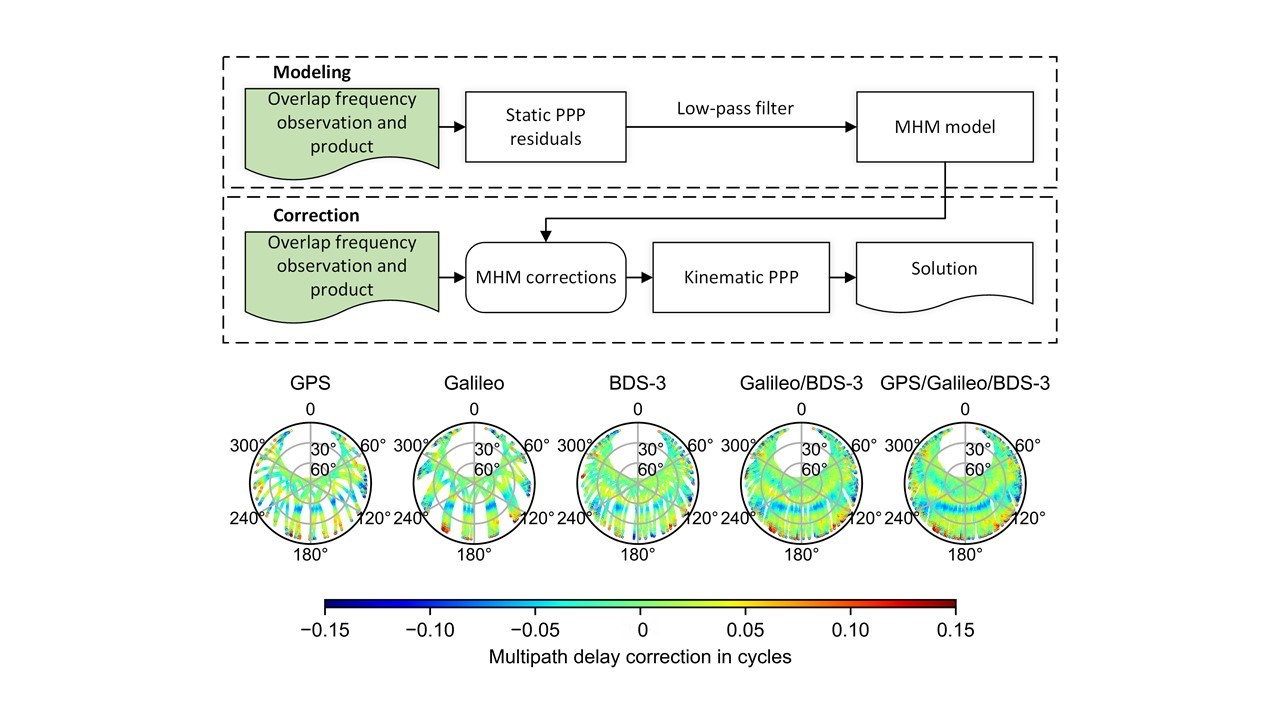The study (DOI: 10.1186/s43020-024-00144-7), led by Jianghui Geng from the GNSS Research Center at Wuhan University and co-authored by experts from both the Chinese Academy of Sciences and the University of Tokyo, was published in Satellite Navigation on 15 July 2024. Utilizing data from 21 European stations, this research not only enhances our understanding of the GPS, Galileo, and BDS-3 systems but also highlights the efficacy of using overlap-frequency signals in applications demanding high precision. Furthermore, they have introduced this multipath modeling module within the open source software PRIDE PPP-AR v3.1 (https://github.com/PrideLab/PRIDE-PPPAR), offering an efficient tool to mitigate multipath effects, beneficial for GNSS high-precision positioning applications.
The investigation entailed a detailed analysis over 31 days of data from 21 European stations, assessing the newly devised MHM_GEC model against established GNSS-specific MHMs and Sidereal Filtering techniques. The findings revealed that MHM_GEC, which amalgamates data from the GPS, Galileo, and BDS-3 systems, markedly excels in mitigating multipath effects. The MHM_GEC, constructed using 5 to 6 days of data, can enhance positioning precision by 40%, outperforming the traditional GNSS-specific MHMs and sidereal filtering established with 10 days of data. This performance boost is credited to the model’s ability to effectively use overlap-frequency signals from different constellations, markedly enhancing spatial resolution, modeling efficiency, and multipath correction performance.
The potential impacts of this research are broad, set to transform industries that depend on precise positioning, such as maritime navigation, deformation monitoring and geodesy. By minimizing the margin of error, the interoperable MHM model not only boosts system reliability but also opens up new possibilities for applications that require exceedingly precise location data.
###
References
DOI
Original Source URL
https://doi.org/10.1186/s43020-024-00144-7
Funding information
This work is funded by the National Natural Science Foundation of China (42025401) and the Projects of International Cooperation and Exchanges NSFC (42361134580, 42311530062).
About Satellite Navigation
Satellite Navigation (E-ISSN: 2662-1363; ISSN: 2662-9291) is the official journal of Aerospace Information Research Institute, Chinese Academy of Sciences. The journal aims to report innovative ideas, new results or progress on the theoretical techniques and applications of satellite navigation. The journal welcomes original articles, reviews and commentaries.



